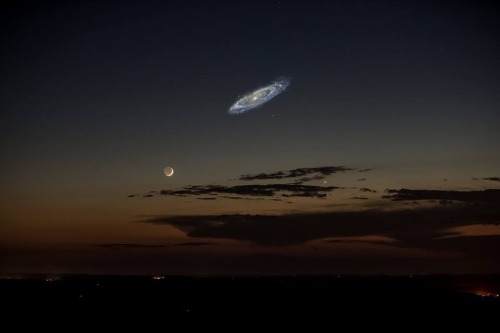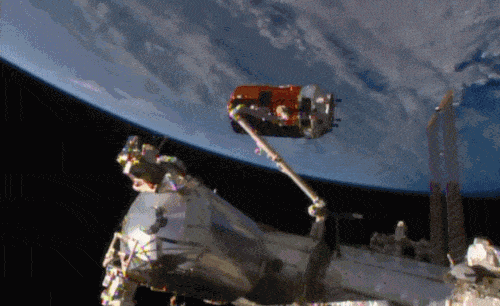Andromedasbitch-blog - Spacey

More Posts from Andromedasbitch-blog and Others

Traveling across more than seven Midwestern states with a professional storm-chasing group, photographer Eric Meola documents everything from hair-raising tornadoes to serene sunsets in his project ‘Tornado Alley: The Sky Above the Land Below.’ While the deadly force of a storm can wreak havoc upon a community, he hopes his work reminds the safety-conscientious observer that there is another side to these storms. “You are miles away from the nearest town and you are looking at these beautiful, flat horizons with endless wheat fields, long roads and dramatic rolling hills,” Meola tells TIME. “Then in all of the peacefulness comes this angry sky that is almost exploding with energy and light, form and shape. Nature truly is beautiful.” Photograph by Eric Meola. Read more at lightbox.time.com and see a behind the scenes picture @timelightbox. http://ift.tt/1Kvla1j

It’s Red, White and Blue stars month!
This week’s entry: Life of a star Part 2
http://www.schoolsobservatory.org.uk/astro/stars/lifecycle

The Milky Way from Yosemite, CA
js
“I liked them before they were famous”


Aboard the International Space Station this morning, Astronaut Kimiya Yui of the Japan Aerospace Exploration Agency (JAXA) successfully captured JAXA’s Kounotori 5 H-II Transfer Vehicle (HTV-5) at 6:28 a.m. EDT.
Yui commanded the station’s robotic arm, Canadarm2, to reach out and grapple the HTV-5, while NASA astronauts Kjell Lindgren provided assistance and Scott Kelly monitored HTV-5 systems. The HTV-5 launched aboard an H-IIB rocket at 7:50 a.m. Wednesday, Aug. 19, from the Tanegashima Space Center in southern Japan. Since then, the spacecraft has performed a series of engine burns to fine-tune its course for arrival at the station.
The HTV-5 is delivering more than 8,000 pounds of equipment, supplies and experiments in a pressurized cargo compartment. The unpressurized compartment will deliver the 1,400-pound CALorimetric Electron Telescope (CALET) investigation, an astrophysics mission that will search for signatures of dark matter and provide the highest energy direct measurements of the cosmic ray electron spectrum.
Below is a breathtaking image shared by Astronaut Scott Kelly of the HTV-5 and Canadarm2, which reached out and grappled the cargo spacecraft.





1960’s(USA) Color Photography

Light Installation - by Chris Fraser


What is a gamma-ray burst?
Gamma-ray bursts (GRBs) are flashes of gamma rays associated with extremely energetic explosions that have been observed in distant galaxies. They are the brightest electromagnetic events known to occur in the universe. Bursts can last from ten milliseconds to several minutes. The initial burst is usually followed by a longer-lived “afterglow” emitted at longer wavelengths (X-ray, ultraviolet, optical, infrared, microwave and radio).
Most observed GRBs are believed to consist of a narrow beam of intense radiation released during a supernova or hypernova as a rapidly rotating, high-mass star collapses to form a neutron star, quark star, or black hole. A subclass of GRBs (the “short” bursts) appear to originate from a different process - this may be due to the merger of binaryneutron stars. The cause of the precursor burst observed in some of these short events may be due to the development of a resonance between the crust and core of such stars as a result of the massive tidal forces experienced in the seconds leading up to their collision, causing the entire crust of the star to shatter.
Gamma-ray bursts are thought to be highly focused explosions, with most of the explosion energy collimated into a narrow jet traveling at speeds exceeding 99.995% of the speed of light. The approximate angular width of the jet (that is, the degree of spread of the beam) can be estimated directly by observing the achromatic “jet breaks” in afterglow light curves: a time after which the slowly decaying afterglow begins to fade rapidly as the jet slows and can no longer beam its radiation as effectively
Image credit: NASA/Swift/Cruz deWilde
-
 summerwages liked this · 3 days ago
summerwages liked this · 3 days ago -
 feralopossumprincess reblogged this · 3 days ago
feralopossumprincess reblogged this · 3 days ago -
 cxlllisto reblogged this · 4 days ago
cxlllisto reblogged this · 4 days ago -
 itwillgetbetteriswearitwill liked this · 4 days ago
itwillgetbetteriswearitwill liked this · 4 days ago -
 manasizsimdi reblogged this · 4 days ago
manasizsimdi reblogged this · 4 days ago -
 manasizsimdi liked this · 4 days ago
manasizsimdi liked this · 4 days ago -
 xnnvm reblogged this · 4 days ago
xnnvm reblogged this · 4 days ago -
 fa23 liked this · 4 days ago
fa23 liked this · 4 days ago -
 non-humann reblogged this · 4 days ago
non-humann reblogged this · 4 days ago -
 ziyad77 liked this · 4 days ago
ziyad77 liked this · 4 days ago -
 nmd-79 liked this · 5 days ago
nmd-79 liked this · 5 days ago -
 borninthe80sandlovingtheladies liked this · 5 days ago
borninthe80sandlovingtheladies liked this · 5 days ago -
 pnwmermaid reblogged this · 5 days ago
pnwmermaid reblogged this · 5 days ago -
 ishalashaska liked this · 5 days ago
ishalashaska liked this · 5 days ago -
 lkabbanil liked this · 5 days ago
lkabbanil liked this · 5 days ago -
 3aj97 reblogged this · 5 days ago
3aj97 reblogged this · 5 days ago -
 i5w reblogged this · 5 days ago
i5w reblogged this · 5 days ago -
 simplyhandsome69 liked this · 5 days ago
simplyhandsome69 liked this · 5 days ago -
 nn-001 reblogged this · 5 days ago
nn-001 reblogged this · 5 days ago -
 wannabesum1else liked this · 5 days ago
wannabesum1else liked this · 5 days ago -
 pundp reblogged this · 5 days ago
pundp reblogged this · 5 days ago -
 merikeee reblogged this · 6 days ago
merikeee reblogged this · 6 days ago -
 endlessfireinside reblogged this · 6 days ago
endlessfireinside reblogged this · 6 days ago -
 biekchen liked this · 6 days ago
biekchen liked this · 6 days ago -
 mon-ange-mj reblogged this · 6 days ago
mon-ange-mj reblogged this · 6 days ago -
 gottsei-junk reblogged this · 6 days ago
gottsei-junk reblogged this · 6 days ago -
 cashmerekush222 reblogged this · 6 days ago
cashmerekush222 reblogged this · 6 days ago -
 cashmerekush222 liked this · 6 days ago
cashmerekush222 liked this · 6 days ago -
 youjustneedtostaystrong reblogged this · 6 days ago
youjustneedtostaystrong reblogged this · 6 days ago -
 sinatra333 reblogged this · 6 days ago
sinatra333 reblogged this · 6 days ago -
 sinatra333 liked this · 6 days ago
sinatra333 liked this · 6 days ago -
 93amashael reblogged this · 6 days ago
93amashael reblogged this · 6 days ago -
 93amashael liked this · 6 days ago
93amashael liked this · 6 days ago -
 darkfores-t liked this · 6 days ago
darkfores-t liked this · 6 days ago -
 deathtomiseryxx reblogged this · 6 days ago
deathtomiseryxx reblogged this · 6 days ago -
 silentthinker liked this · 6 days ago
silentthinker liked this · 6 days ago -
 loves-to-lose reblogged this · 6 days ago
loves-to-lose reblogged this · 6 days ago -
 thetastiestsunflower4 reblogged this · 6 days ago
thetastiestsunflower4 reblogged this · 6 days ago -
 thetastiestsunflower4 liked this · 6 days ago
thetastiestsunflower4 liked this · 6 days ago -
 guri-da-lua reblogged this · 6 days ago
guri-da-lua reblogged this · 6 days ago -
 lifesuckss reblogged this · 6 days ago
lifesuckss reblogged this · 6 days ago -
 lifesuckss liked this · 6 days ago
lifesuckss liked this · 6 days ago -
 odetoz liked this · 6 days ago
odetoz liked this · 6 days ago -
 angelundermoon reblogged this · 6 days ago
angelundermoon reblogged this · 6 days ago -
 angelundermoon liked this · 6 days ago
angelundermoon liked this · 6 days ago -
 godbonsai reblogged this · 6 days ago
godbonsai reblogged this · 6 days ago -
 godbonsai liked this · 6 days ago
godbonsai liked this · 6 days ago